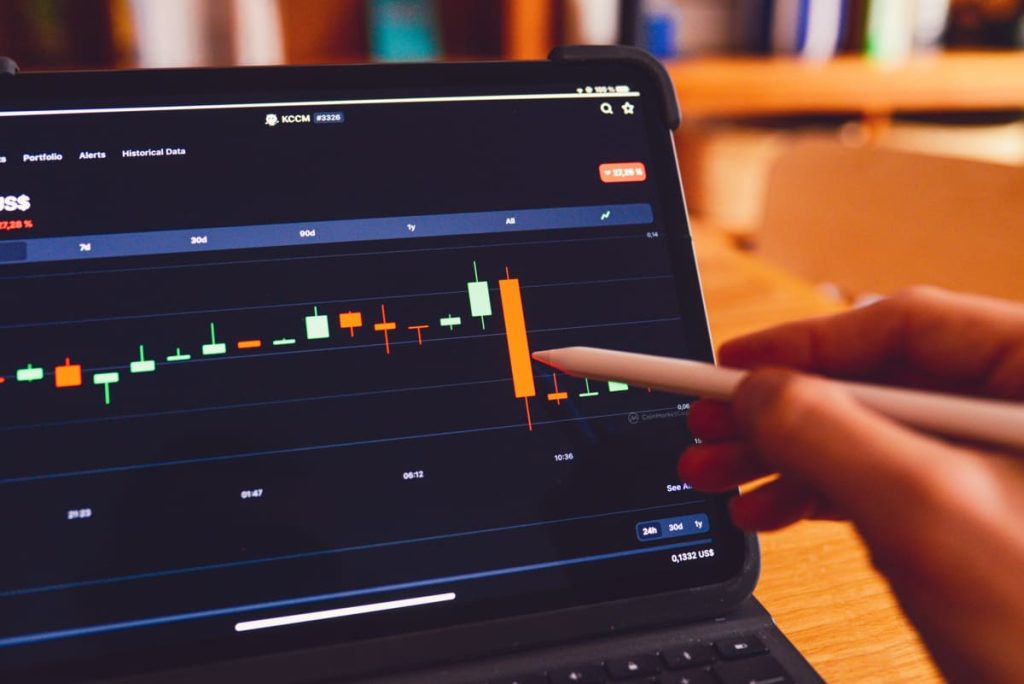Algo Trading, the short form for Algorithmic Trading, uses preset directions to complete transactions in financial markets. It checks out various elements like price, volume, and time. Not only these, but it also considers other trading circumstances. People are going for Algo Trading Software more and more because it’s faster, more accurate, and efficient than old-school manual trading. It’s also consistent! But it’s not always easy.

Algo Trading comes with its set of complex tech, financial, and regulatory challenges. To handle all these, careful planning and management are needed. In this piece, we’ll delve into how Algo Trading runs, its components, benefits, and risks. We’ll also discuss its strategies and applications across various types of assets and markets.
Algorithmic Trading: A Closer Look
Algo trading uses algorithms to evaluate vast volumes of data, produce signals, and execute orders automatically or semi-automatically. Technical analysis, fundamental analysis, news, and market sentiment can inform algorithms. Algorithms can take advantage of short-term inefficiencies in the market.
They also provide arbitrage opportunities, can increase transaction speed and quality, optimize trading techniques, manage portfolios effectively, and reduce the cost and slippage of transactions. Algo trading now leads in global trading volumes, spanning various asset classes and markets. In 2018, algorithmic trading contributed between 60 and 73% of all U.S. equity trading.
Electronic trading started with simple protocols that helped place orders manually or through software. Algo trading has since developed. With the rise in technology, markets becoming competitive and more complex, traders began to use advanced algorithms.
These can deal with multiple markets and instruments all at once, work 24/7 without getting tired or distracted, and smartly adjust to shifts in market conditions.
The Role of Algo Trading Software
This software lets traders use their techniques. Functions of algo trading software include:
- Data Collection and Analysis: The data collection in algo trading software could consist of historical and real-time market data, which could be received by several means, such as exchanges, brokers, data providers, and web scraping. In conjunction with this, the software could also analyze and filter the data in the way that the trader would want, whereby it would be able to find patterns using machine learning, artificial intelligence, optimization, and risk management.
- Signal generation and execution: This software can automatically or semi-automatically generate and execute buy and sell signals on the chosen market and platform using trader logic and rules. It may also track trader positions, orders, and risk exposure and modify strategy to market conditions.
- Review and optimization of performance: With the use of either live or possibly historical data, the algo trading software may review as well as optimize the performance of strategies concerning returns, drawdowns, Sharpe ratios, and other related indicators. The software can optimize parameters, backtest strategies, and enhance logic and rules.
Inside the Algo Trading Partner Program
Algo traders work with brokers and exchanges in algo trading partner programs. The global algorithmic trading market was $12,143 million in 2020 and will reach $31,494 million by 2028.
Some benefits that one can obtain through an algo trading partner program include:
- This program can boost their trades with better market data feeds, order types, margin requirements, commissions, and customer support. Partner programs in algo trading can also offer them funding, incentives, recognition, and scaling prospects to excel amidst others.
- It can be responsible for an enormous rise in liquidity, volume of trade, revenue via brokerage, and customers of the financial institution.
The Engine Driving Algo Trading
The algo trading engine is the heart component of the algo trading system that processes the data and does the needful in executing the trades. The main categorization that can be done on the trading engine is set to be into three parts:
- The data handler: It will receive, store, and stream the market data received from different inputs such as exchanges, brokers, vendors of data, or scraping websites. It could also filter and normalize the data following the specifications the trader requires.
- The strategy handler: It partakes the logic of the trader and rules to generate signals and execute orders. Monitoring and managing the risk exposure, positions, and orders for the trader can be done by the strategy handler.
- Execution handler: It is unique in that it interfaces with the market and handles orders created by the handler for strategy. The execution handler can also deal with different pad types of orders, such as market orders, limit orders, stop orders, or conditional orders.
The algo trading engine can be integrated with many cutting-edge technologies that give it the ability to enhance its performance and, in turn, enhance its capabilities, such as:
- Cloud computing: It allows the traders to access servers and storage located remotely over the internet, rather than depending on local hardware and software. Algo trading has multiple advantages from cloud computing, from scalability, flexibility, cheap cost, and security.
- Distributed ledger technology (DLT): Such a technology would enable traders to record and share transactions among an interconnected set or network of nodes rather than relying on one central authority or intermediary. DLT could have all sorts of benefits when it came to algo trading, including things like transparency, efficiency, security, as well as trust.
Managing the Big Risks of Algorithmic Trading
Big Risks of algorithmic trading that can impair algo trading success include:
- Market risk: Losing money due to market price or condition changes. Market risk can result from volatility, liquidity, competition, or events.
- Technological risk: Losing money due to algo trading system technological problems or glitches. Hardware failures, software problems, network outages, and hacking assaults can generate technical risk.
- Operational risk: Algo trading system operational problems or errors can cost money. Human error, regulatory violations, fraud, and legal conflicts can increase operational risk.
To manage these risks, algo traders must use tactics like:
- Risk analysis: This involves detecting, measuring, and assessing risks to the algo trading system and performance. Risk analysis helps traders identify and mitigate hazards.
- Risk control: Implementing, monitoring, and updating mitigation procedures to reduce risk occurrence and severity. Risk control helps traders follow their algo trading system’s entry and exit points, stop-losses, take-profits, risk-reward ratios, and position sizes.
- Risk review: Reviewing, reporting, and learning from risk management results. Risk review analyzes returns, drawdowns, Sharpe ratios, and other measures to help traders optimize risk management techniques.
Conclusion
So, what’s the big change in finance? It’s also trading! Powerful algorithms and speedy technology are making trades more precise and reliable. We need the algo software for digging deep into data, creating signals, and nailing the execution. Guess what, even algo traders and finance firms are making profits with partner programs!
Market fluctuations, tech glitches, and operational hiccups can cause real headaches. To tackle these, we need intelligent risk management solutions. Risk analysis, control, and review? They’re crucial for top-notch algo trading performance. As algo trading continues to evolve, all those finance whizzes out there better keep up with the latest and greatest practices.



Recent Comments